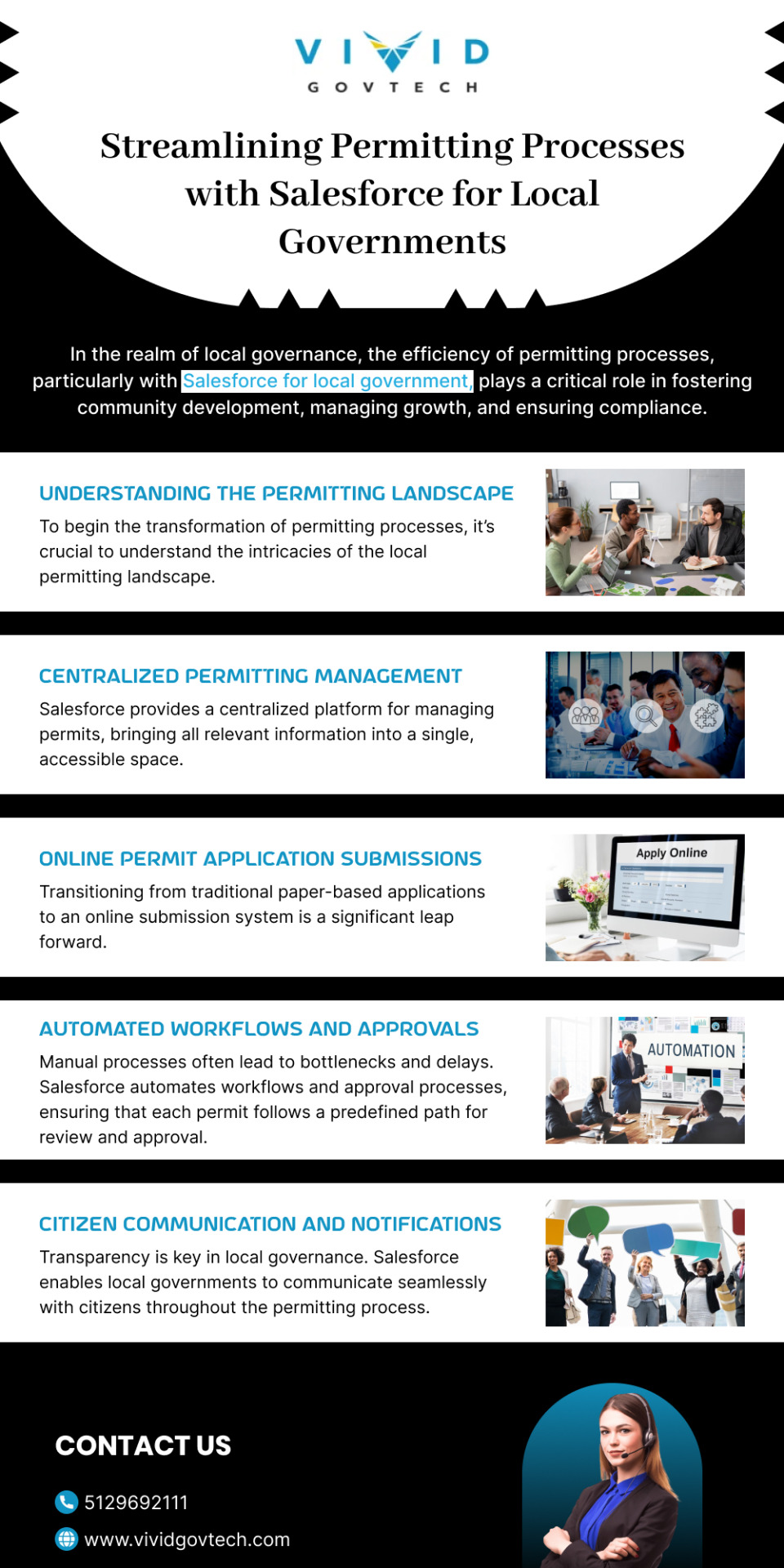#GovTech
Text
The Disruptive Potential of Cryptocurrency, Blockchain, and DLT
Cryptocurrency, blockchain, and Distributed Ledger Technology (DLT) have been disrupting industries and challenging traditional business models since their inception. These technologies have the potential to revolutionize the way we do business, interact with each other, and even govern ourselves. In this blog post, we will explore the disruptive potential of cryptocurrency, blockchain, and DLT.
Cryptocurrency
Cryptocurrency, such as Bitcoin and Ethereum, is a decentralized digital currency that uses cryptography to secure transactions and control the creation of new units. Cryptocurrency has the potential to disrupt traditional financial systems by providing a more secure and transparent way to transfer value. Cryptocurrency eliminates the need for intermediaries, such as banks, and can help reduce transaction fees and increase financial inclusion.
Blockchain
Blockchain is a distributed ledger that records transactions in a secure and transparent way. Each block in the chain contains a cryptographic hash of the previous block, creating an immutable record of all transactions on the network. Blockchain has the potential to disrupt a wide range of industries, including finance, healthcare, and supply chain management. Blockchain can help increase transparency, reduce fraud, and improve efficiency.
Distributed Ledger Technology (DLT)
DLT is a type of database that is distributed across a network of computers. Each computer in the network has a copy of the database, and any changes to the database are recorded in a transparent and immutable way. DLT has the potential to disrupt a wide range of industries, including finance, healthcare, and government. DLT can help increase transparency, reduce fraud, and improve efficiency.
Disruptive Potential
The disruptive potential of cryptocurrency, blockchain, and DLT is significant. Here are some of the ways that these technologies could disrupt traditional industries:
Finance
Cryptocurrency and blockchain have the potential to disrupt traditional financial systems by providing a more secure and transparent way to transfer value. Cryptocurrency eliminates the need for intermediaries, such as banks, and can help reduce transaction fees and increase financial inclusion. Blockchain can also help reduce fraud and increase transparency in financial transactions.
Healthcare
Blockchain and DLT have the potential to disrupt the healthcare industry by providing a more secure and transparent way to store and share patient data. Blockchain can help increase patient privacy and reduce the risk of data breaches. DLT can also help improve the efficiency of healthcare systems by reducing administrative costs and improving supply chain management.
Government
DLT has the potential to disrupt traditional government systems by providing a more secure and transparent way to store and share data. DLT can help increase transparency and reduce fraud in government transactions. DLT can also help improve the efficiency of government systems by reducing administrative costs and improving data management.
Conclusion
Cryptocurrency, blockchain, and DLT have the potential to disrupt traditional industries and revolutionize the way we do business, interact with each other, and even govern ourselves. These technologies offer a more secure and transparent way to transfer value, store and share data, and reduce fraud. As these technologies continue to evolve, we can expect to see more innovative solutions emerge that have the potential to disrupt traditional industries even further.
#Cryptocurrency#blockchain#DLT#disruption#finance#fintech#Cryptocurrencies#BlockchainTechnology#DistributedLedgerTechnology#FutureOfFinance#DigitalCurrency#FinancialInclusion#Healthcare#HealthTech#blockchaininhealthcare#patientdata#government#govtech#blockchainingovernment#transparency#innovation#technologydisruption#revolutionizingindustries
43 notes
·
View notes
Text
O que é GovTech?
Algumas soluções tecnológicas e de processos têm surgido nos últimos anos com o objetivo de melhorar a eficiência e a transparência dos serviços públicos, e de facilitar a interação entre o governo e a população. Estas soluções estão sendo chamadas de GovTechs, em analogia a outras “techs” atuais que estão revolucionando diversos setores.
Trago hoje alguns exemplos do que tem se enquadrado nesta…

View On WordPress
#AI#arquitecto e urbanista#arquiteto e urbanista#arquitetura e urbanismo#artificial intelligence#blockchain#blog#blog do Trevisan#cidades inteligentes#eficiência pública#ferramentas digitais#ferramentas digitais para governo#gestão urbana#Gov Tech#governo digital#governo eficiente#governos digitais#GovTech#IA#inteligência artificial#o que é conceito#o que é governo digital#o que são#o que são govtechs#planejamento urbano#plataforma de governo digital#Ricardo Trevisan#smart cities#smart city#soluções digitais
0 notes
Text
The Most “Sky High” Govt Job Is PGT Teacher
REQUIREMNT:1. Passed their 12th standard from a recognized board2. Should know English3. Scored a minimum of 50% marks in their 12th Exam4. Graduated with a minimum of 55% marks5. Have a teaching qualification such as B.Ed., PgCTL, D.El.Ed etc6. Completed post-graduation in their subject of interest from a recognized university.

View On WordPress
0 notes
Link
Dive into the alarming convergence of Ukraine and the World Economic Forum in a GovTech alliance, unearthing the potential upheaval of global governance. Brace for a digital revolution that could redefine our world. #Ukraine #GovTech #WEF #NewWorldOrder
0 notes
Text
Top Govt Tech Startups
In the dynamic intersection of technology and governance, a new breed of pioneers is emerging — government tech startups.
Read More : https://startups.govciooutlook.com/vendors/top-govt-tech-startups.html

0 notes
Link
https://bit.ly/3PhKyiU - 🔍 The U.S. Army Protective Services Battalion, a Secret Service equivalent, is now using advanced surveillance tools for tracking both direct and indirect threats on social media against high-ranking military officials. These tools have the ability to pinpoint a user's location and identify negative sentiment towards their protected individuals. #DigitalSurveillance #CyberSecurity 🌍 This extended mandate of the Protective Services Battalion is new and reflects an increased focus on the influence of social media on national security. However, concerns about privacy and free speech have been raised, especially when surveillance extends to "expressing positive or negative sentiment towards a senior high-risk individual". #FreeSpeech #PrivacyRights 💰 Protective details have always stirred debate over cost and necessity. During the Trump administration, significant costs were incurred by protective details for Education Secretary Betsy DeVos and EPA Administrator Scott Pruitt. This new expansion in protective services could also raise concerns about costs. #GovernmentSpending 🔧 The protective unit has detailed the need for software that can help mitigate online threats and track sentiment about senior Pentagon officials. This toolkit is expected to collect publicly available information while ensuring the user's anonymity and security. #SocialMediaMonitoring 🔎 The Army plans to utilize these tools not just for tracking online threats, but also for locating the origin of these threats. Access to Twitter’s “firehose,” 4Chan, Reddit, YouTube, and Vkontakte, among other platforms, will be used to identify potential threats. The toolkit would combine this data with public and nonpublic information from various sources. #OnlineSecurity #DataProtection 🛡️ Surveillance isn't the only feature of this toolkit. It also includes tools for disguising the Army’s internet presence during monitoring, using techniques like falsifying web browser information and relaying Army internet traffic through servers in foreign cities. #CyberSec 📍 The data collected by the toolkit is categorized as “PAI,” or publicly available information, but it often includes commercially purchased private data. This approach raises privacy concerns, especially given that federal agencies have used similar methods to collect data on Americans without judicial oversight. #DataPrivacy 🏢 The contract for these services was awarded to SEWP Solutions, LLC, a federal software vendor. They have repeatedly sold the Department of Defense a suite of surveillance tools that closely align with what is described in the Army project. #GovTech 🕵️♀️ As these surveillance practices increase, concerns over potential abuses of covert surveillance operations persist. The systematic collection, storage, and analysis of online information by government agencies could significantly interfere with the right to respect for private life.
#DigitalSurveillance#CyberSecurity#FreeSpeech#PrivacyRights#GovernmentSpending#SocialMediaMonitoring#OnlineSecurity#DataProtection#CyberSec#DataPrivacy#GovTech#PrivacyConcerns#DigitalRights
0 notes
Text
ugghhhh I've spent the last week battling just the crustiest, most eldritch data known to man
#valk yelling at clouds#the true horror of working govtech#why do we even need primary keys in our database#cant you just figure out what data you need based on vibes???
8 notes
·
View notes
Text
Streamlining Permitting Processes with Salesforce for local Governments
Discover how the integration of Salesforce for local government purposes enhances efficiency, transparency, and collaboration within permitting processes. This discussion navigates through the tailored solutions that Salesforce provides, optimizing the bureaucratic workflow for streamlined operations. Uncover the power of cutting-edge technology to simplify, expedite, and modernize permitting systems, empowering local governments to better serve their communities with precision and effectiveness.

0 notes
Text
This story is part of a joint investigation between Lighthouse Reports and WIRED. To read other stories from the series, click here.
Mitch Daniels is a numbers guy, a cost-cutter. In the early 2000s, he tried and failed to rein in congressional spending under then-US president George W. Bush. So when he took office as Indiana governor in 2005, Daniels was ready to argue once again for fiscal discipline. He wanted to straighten out Indiana’s state government, which he deemed rife with dysfunction. And he started with its welfare system. “That department had been rocked by a series of criminal indictments, with cheats and caseworkers colluding to steal money meant for poor people,” he later said.
Daniels’ solution took the form of a $1.3 billion, 10-year contract with IBM. He had lofty ambitions for the project, which started in 2006, claiming it would improve the benefits service for Indiana residents while cracking down on fraud, ultimately saving taxpayers billions of dollars.
But the contract was a disaster. It was canceled after three years, and IBM and Indiana spent a decade locked in a legal battle about who was to blame. Daniels described IBM’s sweeping redesign and automation of the system—responsible for deciding who was eligible for everything from food stamps to medical cover—as deficient. He was adamant, though, that outsourcing a technical project to a company with expertise was the right call. “It was over-designed,” he said. “Great on paper but too complicated to work in practice.” IBM declined a request for comment.
In July 2012, Judge David Dryer of the Marion County Superior Court ruled that Indiana had failed to prove IBM had breached its contract. But he also delivered a damning verdict on the system itself, describing it as an untested experiment that replaced caseworkers with computers and phone calls. “Neither party deserves to win this case,” he said. “This story represents a ‘perfect storm’ of misguided government policy and overzealous corporate ambition.”
That might have been an early death knell for the burgeoning business of welfare state automation. Instead, the industry exploded. Today, such fraud systems form a significant part of the nebulous “govtech” industry, which revolves around companies selling governments new technologies with the promise that new IT will make public administration easier-to-use and more efficient. In 2021, that market was estimated to be worth €116 billion ($120 billion) in Europe and $440 billion globally. And it’s not only companies that expect to profit from this wave of tech. Governments also believe modernizing IT systems can deliver big savings. Back in 2014, the consultancy firm McKinsey estimated that if government digitization reached its “full potential,” it could free up $1 trillion every year.
Contractors around the world are selling governments on the promise that fraud-hunting algorithms can help them recoup public funds. But researchers who track the spread of these systems argue that these companies are often overpaid and under-supervised. The key issue, researchers say, is accountability. When complex machine learning models or simpler algorithms are developed by the private sector, the computer code that gets to define who is and isn’t accused of fraud is often classed as intellectual property. As a result, the way such systems make decisions is opaque and shielded from interrogation. And even when these algorithmic black holes are embroiled in high-stakes legal battles over alleged bias, the people demanding answers struggle to get them.
In the UK, a community group called the Greater Manchester Coalition of Disabled People is trying to determine whether a pattern of disabled people being investigated for fraud is linked to government automation projects. In France, the digital rights group La Quadrature du Net has been trying for four months to find out whether a fraud system is discriminating against people born in other countries. And in Serbia, lawyers want to understand why the introduction of a new system has resulted in hundreds of Roma families losing their benefits. “The models are always secret,” says Victoria Adelmant, director of New York University’s digital welfare state project. “If you don’t have transparency, it’s very difficult to even challenge and assess these systems.”
The rollout of automated bureaucracy has happened quickly and quietly, but it has left a trail of scandals in its wake. In Michigan, a computer system used between 2013 and 2015 falsely accused 34,000 people of welfare fraud. A similar thing happened in Australia between 2015 and 2019, but on a larger scale: The government accused 400,000 people of welfare fraud or error after its social security department started using a so-called robodebt algorithm to automatically issue fines.
Another scandal emerged in the Netherlands in 2019 when tens of thousands of families—many of them from the country’s Ghanaian community—were falsely accused of defrauding the child benefits system. These systems didn’t just contribute to agencies accusing innocent people of welfare fraud; benefits recipients were ordered to repay the money they had supposedly stolen. As a result, many of the accused were left with spiraling debt, destroyed credit ratings, and even bankruptcy.
Not all government fraud systems linked to scandals were developed with consultancies or technology companies. But civil servants are increasingly turning to the private sector to plug knowledge and personnel gaps. Companies involved in fraud detection systems range from giant consultancies—Accenture, Cap Gemini, PWC—to small tech firms like Totta Data Lab in the Netherlands and Saga in Serbia.
Experts in automation and AI are expensive to hire and less likely to be wooed by public sector salaries. When the UK surveyed its civil servants last year, confidence in the government’s ability to use technology was low, with around half of respondents blaming an inability to hire top talent. More than a third said they had few or no skills in artificial intelligence, machine learning, or automation. But it’s not just industry experience that makes the private sector so alluring to government officials. For welfare departments squeezed by budget cuts, “efficiency” has become a familiar buzzword. “Quite often, a public sector entity will say it is more efficient for us to go and bring in a group of consultants,” says Dan Sheils, head of European public service at Accenture.
The public sector lacks the expertise to create these systems and also to oversee them, says Matthias Spielkamp, cofounder of German nonprofit Algorithm Watch, which has been tracking automated decision-making in social welfare programs across Europe since 2017. In an ideal world, civil servants would be able to develop these systems themselves and have an in-depth understanding of how they work, he says. “That would be a huge difference to working with private companies, because they will sell you black-box systems—black boxes to everyone, including the public sector.”
In February 2020, a crisis broke out in the Dutch region of Walcheren as officials realized they were in the dark about how their own fraud detection system worked. At the time, a Dutch court had halted the use of another algorithm used to detect welfare fraud, known as SyRI, after finding it violated people’s right to privacy. Officials in Walcheren were not using SyRI, but in emails obtained by Lighthouse Reports and WIRED through freedom-of-information requests, government employees had raised concerns that their algorithm bore striking similarities to the one just condemned by the court.
Walcheren’s system was developed by Totta Data Lab. After signing a contract in March 2017, the Dutch startup developed an algorithm to sort through pseudonymous information, according to details obtained through a freedom-of-information request. The system analyzed details of local people claiming welfare benefits and then sent human investigators a list of those it classified as most likely to be fraudsters.
The redacted emails show local officials agonizing over whether their algorithm would be dragged into the SyRI scandal. “I don’t think it is possible to explain why our algorithm should be allowed while everyone is reading about SyRI,” one official wrote the week after the court ruling. Another wrote back with similar concerns. “We also do not get insight from Totta Data Lab into what exactly the algorithm does, and we do not have the expertise to check this.” Neither Totta nor officials in Walcheren replied to requests for comment.
When the Netherlands’ Organization for Applied Scientific Research, an independent research institute, later carried out an audit of a Totta algorithm used in South Holland, the auditors struggled to understand it. “The results of the algorithm do not appear to be reproducible,” their 2021 report reads, referring to attempts to re-create the algorithm’s risk scores. “The risks indicated by the AI algorithm are largely randomly determined,” the researchers found.
With little transparency, it often takes years—and thousands of victims—to expose technical shortcomings. But a case in Serbia provides a notable exception. In March 2022, a new law came into force which gave the government the green light to use data processing to assess individuals’ financial status and automate parts of its social protection programs. The new socijalna karta, or social card system, would help the government detect fraud while making sure welfare payments were reaching society’s most marginalized, claimed Zoran Đorđević, Serbia’s minister of social affairs in 2020.
But within months of the system’s introduction, lawyers in the capital Belgrade had started documenting how it was discriminating against the country’s Roma community, an already disenfranchised ethnic minority group.
Mr. Ahmetović, a welfare recipient who declined to share his first name out of concern that his statement could affect his ability to claim benefits in the future, says he hadn’t heard of the social card system until November 2022, when his wife and four children were turned away from a soup kitchen on the outskirts of the Serbian capital. It wasn’t unusual for the Roma family to be there, as their welfare payments entitled them to a daily meal provided by the government. But on that day, a social worker told them their welfare status had changed and that they would no longer be getting a daily meal.
The family was in shock, and Ahmetović rushed to the nearest welfare office to find out what had happened. He says he was told the new social card system had flagged him after detecting income amounting to 110,000 Serbian dinars ($1,000) in his bank account, which meant he was no longer eligible for a large chunk of the welfare he had been receiving. Ahmetović was confused. He didn’t know anything about this payment. He didn’t even have his own bank account—his wife received the family’s welfare payments into hers.
With no warning, their welfare payments were slashed by 30 percent, from around 70,000 dinars ($630) per month to 40,000 dinars ($360). The family had been claiming a range of benefits since 2012, including financial social assistance, as their son’s epilepsy and unilateral paralysis means neither parent is able to work. The drop in support meant the Ahmetovićs had to cut back on groceries and couldn’t afford to pay all their bills. Their debt ballooned to over 1 million dinars ($9,000).
The algorithm’s impact on Serbia’s Roma community has been dramatic. Ahmetović says his sister has also had her welfare payments cut since the system was introduced, as have several of his neighbors. “Almost all people living in Roma settlements in some municipalities lost their benefits,” says Danilo Ćurčić, program coordinator of A11, a Serbian nonprofit that provides legal aid. A11 is trying to help the Ahmetovićs and more than 100 other Roma families reclaim their benefits.
But first, Ćurčić needs to know how the system works. So far, the government has denied his requests to share the source code on intellectual property grounds, claiming it would violate the contract they signed with the company who actually built the system, he says. According to Ćurčić and a government contract, a Serbian company called Saga, which specializes in automation, was involved in building the social card system. Neither Saga nor Serbia’s Ministry of Social Affairs responded to WIRED’s requests for comment.
As the govtech sector has grown, so has the number of companies selling systems to detect fraud. And not all of them are local startups like Saga. Accenture—Ireland’s biggest public company, which employs more than half a million people worldwide—has worked on fraud systems across Europe. In 2017, Accenture helped the Dutch city of Rotterdam develop a system that calculates risk scores for every welfare recipient. A company document describing the original project, obtained by Lighthouse Reports and WIRED, references an Accenture-built machine learning system that combed through data on thousands of people to judge how likely each of them was to commit welfare fraud. “The city could then sort welfare recipients in order of risk of illegitimacy, so that highest risk individuals can be investigated first,” the document says.
Officials in Rotterdam have said Accenture’s system was used until 2018, when a team at Rotterdam’s Research and Business Intelligence Department took over the algorithm’s development. When Lighthouse Reports and WIRED analyzed a 2021 version of Rotterdam’s fraud algorithm, it became clear that the system discriminates on the basis of race and gender. And around 70 percent of the variables in the 2021 system—information categories such as gender, spoken language, and mental health history that the algorithm used to calculate how likely a person was to commit welfare fraud—appeared to be the same as those in Accenture’s version.
When asked about the similarities, Accenture spokesperson Chinedu Udezue said the company’s “start-up model” was transferred to the city in 2018 when the contract ended. Rotterdam stopped using the algorithm in 2021, after auditors found that the data it used risked creating biased results.
Consultancies generally implement predictive analytics models and then leave after six or eight months, says Sheils, Accenture’s European head of public service. He says his team helps governments avoid what he describes as the industry’s curse: “false positives,” Sheils’ term for life-ruining occurrences of an algorithm incorrectly flagging an innocent person for investigation. “That may seem like a very clinical way of looking at it, but technically speaking, that's all they are.” Sheils claims that Accenture mitigates this by encouraging clients to use AI or machine learning to improve, rather than replace, decision-making humans. “That means ensuring that citizens don’t experience significantly adverse consequences purely on the basis of an AI decision.”
However, social workers who are asked to investigate people flagged by these systems before making a final decision aren’t necessarily exercising independent judgment, says Eva Blum-Dumontet, a tech policy consultant who researched algorithms in the UK welfare system for campaign group Privacy International. “This human is still going to be influenced by the decision of the AI,” she says. “Having a human in the loop doesn’t mean that the human has the time, the training, or the capacity to question the decision.”
Despite the scandals and repeated allegations of bias, the industry building these systems shows no sign of slowing. And neither does government appetite for buying or building such systems. Last summer, Italy’s Ministry of Economy and Finance adopted a decree authorizing the launch of an algorithm that searches for discrepancies in tax filings, earnings, property records, and bank accounts to identify people at risk of not paying their taxes.
But as more governments adopt these systems, the number of people erroneously flagged for fraud is growing. And once someone is caught up in the tangle of data, it can take years to break free. In the Netherlands’ child benefits scandal, people lost their cars and homes, and couples described how the stress drove them to divorce. “The financial misery is huge,” says Orlando Kadir, a lawyer representing more than 1,000 affected families. After a public inquiry, the Dutch government agreed in 2020 to pay the families around €30,000 ($32,000) in compensation. But debt balloons over time. And that amount is not enough, says Kadir, who claims some families are now €250,000 in debt.
In Belgrade, Ahmetović is still fighting to get his family’s full benefits reinstated. “I don’t understand what happened or why,” he says. “It’s hard to compete against the computer and prove this was a mistake.” But he says he’s also wondering whether he’ll ever be compensated for the financial damage the social card system has caused him. He’s yet another person caught up in an opaque system whose inner workings are guarded by the companies and governments who make and operate them. Ćurčić, though, is clear on what needs to change. “We don’t care who made the algorithm,” he says. “The algorithm just has to be made public.”
Additional reporting by Gabriel Geiger and Justin-Casimir Braun.
161 notes
·
View notes
Text




At just 7 years old, the Gyalsey of Bhutan held his second solo engagement!
Crown Prince Jigme Namgyel attended the launch of Bhutan NDI, Bhutan’s new National Identity System, developed by Druk Holding and Investments for GovTech Bhutan. During the launch HRH became Bhutan’s first digital citizen by onboarding with the Bhutan NDI mobile wallet | February 21st, 2023
74 notes
·
View notes
Text







سمو الشيخ حمدان بن محمد : ضمن القمة العالمية للحكومات منصة صناعة المستقبل والتجمع الحكومي الأكبر، كرمنا الفائزين “بجائزة تكنولوجيا الحكومات” ... تعكس الجائزة نهج الإمارات وتوجهاتها بتحفيز الطاقات ودعم الجهود لتأسيس جيل مستقبلي من الخدمات الحكومية التي تسهل حياة الناس وتحتفي بأفضل الحلول المبتكرة عالمياً في التطوير الحكومي.
____________
شملت قائمة الفائزين بجائزة تكنولوجيا الحكومات:
- فئة التحول الرقمي الشامل: “بطاقة العائلة الرقمية” من وزارة التنمية الرقمية والابتكار وصناعة الطيران في كازاخستان.
- فئة الخدمات الحكومية المدعومة بالذكاء الاصطناعي: مشروع “iRASTE” من وزارة النقل البري والطرق السريعة في الهند.
- فئة الخدمات التعليمية: مشروع مخرجات التعليم من وزارة التعليم في جمهورية غانا.
- فئة خدمات الرعاية الصحية: مشروع منصة الخدمات الصحية من وزارة الصحة الإندونيسية.
___________________________________
H.H Sheikh Hamdan bin Mohammed : During the World Governments Summit, we proudly celebrated the recipients of The GovTech Prize. This prestigious award epitomizes the UAE’s dedication to fostering talent and acknowledging innovative solutions designed to improve the quality of life for people globally. It underscores the significance of pioneering in the development of human-centric government services, setting new benchmarks for excellence and innovation.
____________
Winning Projects:
- Kazakhstan’s Digital Family Card - Inclusive Digital Transformation category.
- India’s iRASTE - AI-powered Government Services category.
- Ghana’s Education Outcomes Project - Educational Services category.
- Indonesia’s Health Services Platform SatuSehat - Healthcare Services category.
Tuesday, 13 February 2024 الثلاثاء
7 notes
·
View notes
Quote
FWの設定内容をドキュメント上でユーザが確認するのは無理でも、外部から通信できないことを確認する受入試験(or ベンダーの試験結果の確認)ぐらいするべきでは?
[B! GovTech] 自治体システムへの不正アクセスとベンダの責任 前橋地判令5.2.17(令2ワ145) - IT・システム判例メモ
0 notes
Text
Aprendizados viagem do CS Caribenho
G!en!er!a!c!i!o!n c!o!d!e
Hacer organizacion, plataforma, iampacto changemakers govtech
por paises, ya start
0 notes
Text
GOV Learning: R$ 8 milhões para fomentar cidades inteligentes no Distrito Federal
A Fundação de Apoio à Pesquisa do Distrito Federal (FAPDF) está investindo R$ 8 milhões no programa GOV Learning, parte do ecossistema de GovTech, para promover a inovação tecnológica e transformar o DF em referência de Cidade Inteligente no Brasil. A Chamada Pública (02/2024) vinculada ao Edital (06/2024) do Programa FAPDF Learning é uma iniciativa estratégica para melhorar os serviços…

View On WordPress
0 notes
Link
https://bit.ly/45D3xKz - 💻 The Defense Department is planning to expand its Cyber Excepted Service (CES), potentially offering more competitive salaries to an additional tens of thousands of IT workers. Originally permitted by Congress seven years ago, CES currently covers about 15,000 positions. The Pentagon is proposing legislation to extend this to 75,000 employees. #CyberSecurity #DoD 🚀 Patrick Johnson, the director of the DoD CIO’s Workforce Innovation Directorate, believes that the DoD's cyber workforce extends beyond the current confines of the CES. However, he acknowledges cost considerations and implies a quality over quantity approach. "It would cost us a little but more to have people in CES, but I always argue you get what you pay for." #Innovation #WorkforceDevelopment 💵 Implementing the new Special Salary Rate (SSR) for 2210-classified IT and cyber positions would cost the DoD an estimated $740 million per year. Johnson indicates that the DoD is unlikely to opt into the SSR due to budget constraints and prefers a more targeted approach. #Budgeting #GovTech 🎯 CES provides individual DoD commands the flexibility to select the positions they want to move into the new system. It offers "targeted local market supplements," calibrating pay rates to the local rates for IT professionals. Johnson would rather focus on high attrition rate roles to manage vacancies strategically. #HRStrategy #WorkforcePlanning 🔍 The Defense Department has identified 72 distinct work roles in its recently-released cyber workforce strategy, an effort to classify employees according to the actual work they do, not just their job title or occupational series. This new, more nuanced approach includes roles for AI, data, and software-related work.
#CyberSecurity#DoD#Innovation#WorkforceDevelopment#Budgeting#GovTech#HRStrategy#WorkforcePlanning#CyberWorkforce#AI
0 notes